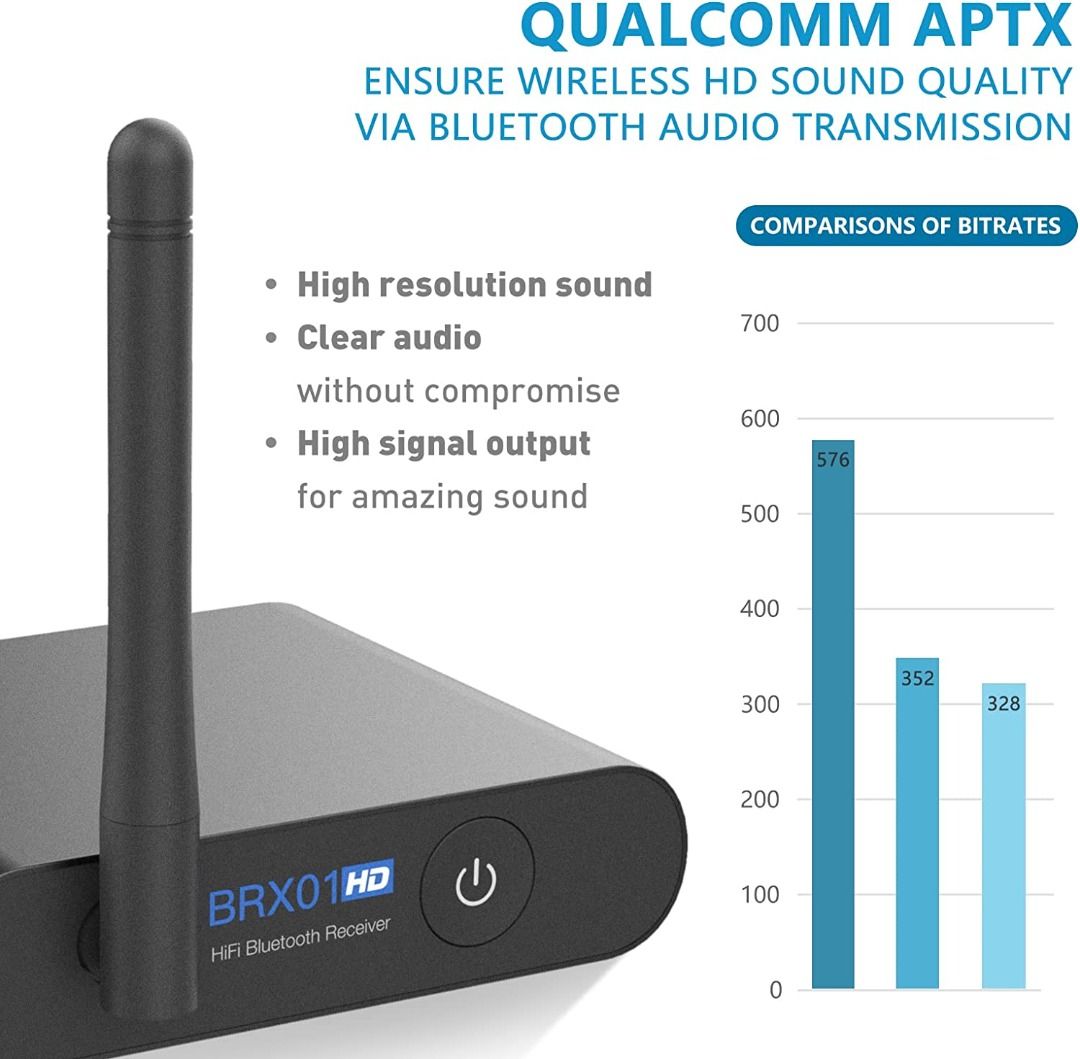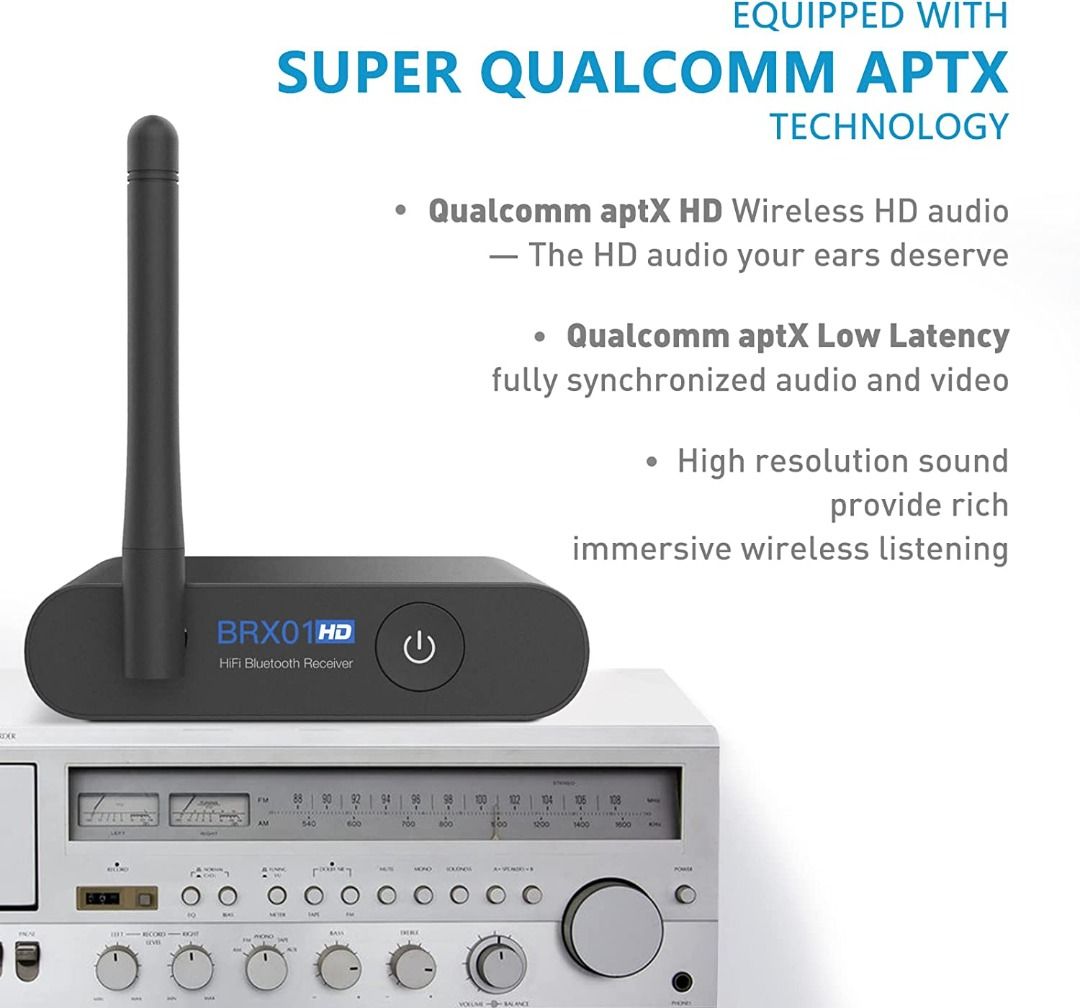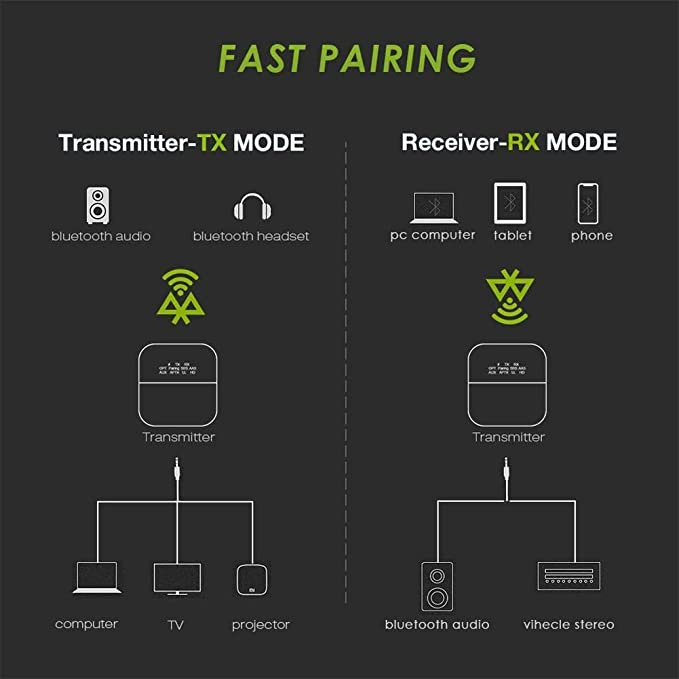Perfect Info About Does Bluetooth 5.0 Have AptX Low Latency

Bluetooth Stereo Receiver, HiRes Wireless Audio Adapter, 5.0
Decoding Bluetooth 5.0 and AptX Low Latency
1. Understanding the Basics
So, you're wondering if Bluetooth 5.0 automatically means your wireless earbuds are going to deliver audio with zero lag? That's a fantastic question! The world of wireless audio can be a bit of a confusing place, with all sorts of codecs and versions floating around. Let's break down whether Bluetooth 5.0 inherently includes aptX Low Latency.
Think of Bluetooth 5.0 as the updated highway for your wireless data. It's faster and more efficient than previous versions, offering better range and more bandwidth. That's all great, but it doesn't automatically dictate what kind of cars (audio codecs) are driving on that highway. AptX Low Latency, on the other hand, is a specific type of car designed for speed. It's a codec, a method of encoding and decoding audio, focused on minimizing the delay between what you see on screen and what you hear.
Essentially, Bluetooth 5.0 provides the potential for better audio performance, but the actual audio quality and latency depend on the codecs supported by both your transmitting device (like your phone) and your receiving device (like your headphones). Just because your phone and headphones both boast Bluetooth 5.0 doesn't guarantee low-latency nirvana.
The key takeaway? Bluetooth version and audio codec are two separate things, and both matter when it comes to achieving that sweet, synchronized audio-visual experience. One without the other is like having a super fast race car on a bumpy dirt road — you won't get the best performance.
2. AptX Low Latency
Let's zoom in on aptX Low Latency for a moment. It's specifically engineered to reduce the delay, or "latency," in audio transmission. This is crucial for things like watching videos or playing games, where even a slight lag can be incredibly distracting. Imagine watching an action movie where the sound of the explosion happens a split-second after you see it. Annoying, right? aptX Low Latency aims to banish that annoyance.
The "Low Latency" part is not just marketing fluff. It targets a latency of under 40 milliseconds. That's fast enough that most people won't perceive any delay, making for a much more immersive and enjoyable experience. This contrasts with standard Bluetooth codecs like SBC, which can have significantly higher latency, leading to noticeable audio lag.
However, and this is a big however, both your transmitting device (phone, tablet, laptop) and your receiving device (headphones, speakers) need to support aptX Low Latency. If either device doesn't support it, the connection will fall back to a different codec, likely one with higher latency. Think of it as needing a specific key to unlock a specific door. If either side is missing the key, you're not getting in.
So, while Bluetooth 5.0 offers the bandwidth and capabilities to support aptX Low Latency beautifully, it's not a given. You need to make sure your devices are actually using that feature.
3. Does Bluetooth 5.0 Automatically Include aptX Low Latency? The Answer!
Here's the deal, plain and simple: No, Bluetooth 5.0 does not automatically include aptX Low Latency. Bluetooth 5.0 is a Bluetooth version, while aptX Low Latency is an audio codec. They are distinct technologies that can work together, but one doesn't inherently guarantee the presence of the other. It's like saying a car has a powerful engine (Bluetooth 5.0) but assuming it automatically has racing tires (aptX Low Latency). They're related, but not the same.
Manufacturers choose which codecs to implement in their devices. They might opt for aptX Low Latency, aptX HD, AAC, SBC, or any combination thereof. It all depends on their target audience, the intended use case, and, of course, cost considerations. Adding aptX Low Latency support typically requires licensing fees, which can influence a manufacturer's decision.
Therefore, don't just assume your shiny new Bluetooth 5.0 headphones are going to deliver lag-free audio. You must check the specifications to confirm that they also support aptX Low Latency. Look for it explicitly mentioned in the product description or technical details. If it's not there, you're likely stuck with a standard codec and potentially noticeable audio lag.
Think of it this way: Bluetooth 5.0 is the road, aptX Low Latency is the type of car driving on it. You need to know what kind of car you are getting to get the right performance. So, do your homework!
4. How to Check for aptX Low Latency Support
Alright, you're convinced. You want that sweet, sweet low-latency audio. But how do you actually check if your devices support aptX Low Latency? Don't worry, it's not like decoding ancient hieroglyphics. Here are a few ways to find out:
1. Product Specifications: This is your first and best resource. Look at the official product page or user manual for your phone, tablet, laptop, or headphones. The audio codec support should be listed in the technical specifications. Search for "aptX Low Latency" or "aptX LL." If it's there, you're in luck!
2. Manufacturer's Website: If you can't find the information in the product documentation, head to the manufacturer's website. They often have detailed specifications listed for their products. Use the search function and type in the model number of your device, followed by "specifications" or "audio codecs."
3. Bluetooth Settings (Android): On some Android devices, you can check the currently active codec in the Bluetooth settings. Go to Settings > Bluetooth, find your connected headphones, and tap the settings icon (usually a gear or "i" icon) next to the device name. Look for a section that displays the "Bluetooth codec." While this won't tell you all the supported codecs, it will tell you which one is currently in use.
4. Third-Party Apps: There are apps available on app stores that can analyze your Bluetooth connection and provide detailed information about supported codecs. Search for apps like "Bluetooth Codec Checker" or similar tools.5. Why Low Latency Matters
While eliminating audio lag in videos is a primary benefit of aptX Low Latency, its advantages extend beyond just Netflix and YouTube binges. Gamers, in particular, can significantly benefit from reduced latency. In fast-paced games, even a slight delay between action and audio can be the difference between victory and defeat. Hearing footsteps a fraction of a second later than they actually occur can put you at a serious disadvantage.
Musicians who use wireless headphones for monitoring during recording or performance can also appreciate the low latency. A noticeable delay can make it difficult to stay in sync with the music and can throw off their timing. aptX Low Latency helps create a more natural and responsive monitoring experience.
Even in everyday scenarios like video conferencing, lower latency can improve communication clarity. Reducing the delay between speech and hearing the response makes conversations feel more natural and less disjointed. It can also help prevent accidental interruptions or talking over each other.
So, while eliminating those slightly out-of-sync explosions in movies is great, the benefits of low latency audio extend to a variety of use cases, making it a valuable feature for anyone who relies on wireless audio for critical applications.


Long Range Bluetooth V5.0 Adapter Aptx Low Latency Wireless


